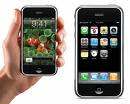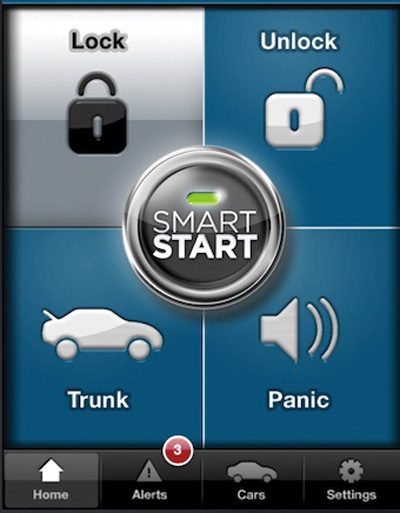
0TTAWA — On June 30, 1979, one-hit wonder Anita Ward's music career climaxed atop Billboard's charts when her disco hit, Ring My Bell, reached No. 1.
The next day, Sony forever changed how Ring My Bell and other songs could be listened to when it introduced the Sony Walkman, a 14-ounce, portable stereo cassette player that allowed people to take and listen to their music collections wherever they wanted — on the bus and subway, at the beach, while jogging, bicycling, skiing, on airplanes or simply while out for a stroll.
Reportedly designed a year earlier so that Sony's honorary chairman, Masaru Ibuka, could listen to his favourite music on long airline flights, the Walkman struck an immediate chord with consumers. While other popular tape recorders at the time sold in the ballpark of 15,000 units, Sony manufactured 30,000 Walkmans for its launch. (Fearful the product would lose money, executives had secretly halved the 60,000 run that chairman Akio Morito had ordered.) The first 30,000 sold out in a month, and since its introduction 30 years ago, the Walkman and its offspring — as it moved from cassette tape to compact disc to minidisc to flash/hard disc drive — have combined to sell 385 million players. (The bulk of those — some 220 million — were cassette players.)
Along the way, first with the Walkman and then more recent players such as Apple's iPods, fundamental changes occurred not simply to where we can listen to our music and how much of it we're able to carry with us, but to how we listen to it, as lightweight headphones and tiny ear buds afford the luxury of discreetly (and, in many cases, not-so-discreetly) tuning out the rest of the world, leaving seatmates on planes only that familiar and trebly, percussive "thsst, thsst, thsst" that spills from our earphones, offering just the slightest hint that yes, we still like our disco.
This year, Sony re-entered the market it largely abandoned years ago to Apple, as it launched its X-Series Walkman, a Wi-Fi-capable, web-surfable, touch-screen MP3 and video player that it hopes will compete with the iPod Touch.
"In the 20th century, this company created great champion products," Sony chief executive Howard Stringer said recently. "In the 21st century, other companies took our hardware like the Walkman and added network capability and turned it into the iPod.
"We are not going to be beaten again in the network age."
"The Walkman was the real revolution," says Robert Thompson, professor of popular culture at Syracuse University in New York. "We'd had portable radios before — boom boxes and tiny little portable radios you could hang on your wrist — but the Sony Walkman really allowed you to take music totally portable, outside of the car, and have your hands completely free. And that was a big deal. It really did revolutionize the ease and high-quality sound of portable sound."
Thompson argues that the Walkman set off numerous changes in our lives, from the nature of family vacations — gone was much of the social interaction in the car, but so, too, were many of the back seat fights — to the instrumental role it played in sustaining a burgeoning jogging movement.
"Two things have to happen when you start jogging or running," he says. "You have to make the decision to do it, and second, you have to keep doing it. The Walkman really helped that to happen."
Paul Theberge, Canada Research Chair in Technological Mediations of Culture at Carleton University, notes, however, that music had been portable since Thomas Edison demonstrated the first phonograph in November 1877, and that as far back as the 1920s and '30s, the leisure classes could be seen listening to their portable, wind-up 78-rpm record players at the beach.
"You could take them anywhere with you and play music," he says.
Theberge suggests that Sony's Walkmans were able to commodify, or "lifestyle," the tape player's mobility. No longer was it all about speaker systems and technically knowledgeable consumers.
"They made it about a design and notions of mobility. In some ways, the iPod has just kind of taken over that — it's all about ease of use and colours and matching your sense of yourself with your consumer accoutrements. Sony started that, at least in the audio world . . . and people like Apple have been able to capitalize on that since."
Theberge says the advent of cassette tapes was as significant a development as the player that most popularly played them, pointing to the fact that when compact discs were introduced to the mainstream in the mid-1980s, cassettes outsold CDs and albums, combined, for another decade.
"Like VHS tapes, people could make their own compilations as well as buy commercial tapes," says Theberge. "People used them to manage their lives — so they'll make tapes for exercising or jogging or partying. There were different kinds of tapes for different purposes. A kind of managing your emotional life through music."
The greatest legacy of the Walkman and its progeny, however, may not be how they allow users to tune in, but how they let them tune out.
With your phonograph at the beach or boom box at the playground, everyone gathered around (or distanced themselves, depending on one's love of Scott Joplin or Grandmaster Flash). The single earpiece of the transistor radio kept semi-witting listeners at least out of the paths of oncoming trains. The Walkman's headphones and subsequent iPod ear buds, meanwhile, sent clear signals to those nearby to keep away.
"When someone had that Walkman headset on," says Thompson, "it really was a sign that they were not available for interaction."
For all that apparent social distance, however, Theberge compares it to some fond experiences he remembers prior to the Walkman's arrival.
"Some of my most interesting experiences that I remember, about hearing certain pieces of music," he says, "is driving down a road at night in the rain, and having music on the radio or on cassette, and just being in that bubble — completely isolated and the darkness and the rain kind of emphasizing that sense of being in a bubble — somehow moving through space in this enclosed sphere."
That, Theberge says, is what Sony built on. "Lose the car and just keep the audio as a sonic bubble."
This was the biggest change between pre- and post-Walkman eras, says Thompson: how music became something many people consumed in private.
Three decades ago, walking down Fraternity Row at university was to listen to a cacophony of sound, with turntables and boom boxes blasting the latest music.
"You'd get a new album and you'd bring it back to your room and you'd play it loud and everyone would listen," he recalls.
"Now, I swear, I walk down Fraternity Rows on a sunny afternoon, and you can hear the crickets chirping and the birds tweeting and that kind of thing. So many people, and especially younger people who have grown up with iPods, are really listening to music now as an individual, isolated event. They're listening on their way to class, they're listening in class if they can get away with it, on public transportation, while they're waiting for the doctor — whatever. And there's really a sense that that has become so much a way to consume music that a lot of people are doing it when they get home as well. Every kid has an iPod, but very few of them have those docking devices that will put it on home stereo systems."
But have Walkmans and iPods, as some critics claim, gone as far as to tear the very fabric of social intercourse?
In an essay published last month in the Daily Mail, English writer and biographer A.N. Wilson excoriated the Walkman on its pearl anniversary, heaping blame on it for what he perceived to be the death of public interaction in Britain. "Is it possible," he asked, "that by inventing what seemed like a marvellous new gadget which would enhance all our lives, Sony actually created one of the biggest blights of urban life?
"With one of these infernal things plugged in to your head you are literally deaf to the needs of others," he continued (apparently unaware that the use of the word "infernal" immediately confers curmudgeonliness), adding that while music remained the most significant mechanism to bind Brits, "the phenomenon of plugging in ear buds removes the social element from musical enjoyment."
Thompson calls Wilson's argument "crazy" and "hyperbole," noting that while the Walkman certainly changed social interaction, it didn't destroy it.
"It allowed you to put a cone of unsociability around you," he says, "because it was a sign. Even now you can tell; when somebody gets into the elevator and they've got iPod buds in their ears, you know that they are not available for even a 'good morning.'
"But there are times," he adds, "on an airplane, on a bus — where that's something you want to do, and that's not necessarily a bad thing. I don't think all of us have the obligation to be constantly sociable to everybody around us all the time."
And while Walkman headphones and iPod ear buds may allow users fewer opportunities for serendipitous social interactions, how often would we really strike up a conversation with the kid beside us on the bus?
"(The Walkman) is a cone," Thompson adds, "it's a wall, but that's not necessarily the end of sociability. It just gives you a bit more control over it."
Theberge, meanwhile, notes that by concentrating solely on the insularity of ear buds, critics overlook the very social world that supports it.
"It's all about playlists and downloading and sharing," he says. "If we just concentrate on what people are doing when they walk around or if you walk down the corridor of a university residence and everybody seems to be listening to their iPods in private, you kind of miss that that privacy is based on a convivial exchange that's going on on the Internet, that it's part of a social world as well."
Taking a Walkman Down Memory Lane
1979: On July 1, Sony releases the Walkman. Anticipating sales of about 5,000 units per month, its initial run of 30,000 sells out in the first month.
1981: Sony, Philips and Polygram jointly introduce the audio compact disc. The word "Walkman" is added to the French dictionary Petit Larousse.
1983: Pre-recorded cassettes outsell vinyl albums for the first time.
1984: Cumulative shipments of Walkmans reach 10 million. Sony introduces the D-50, the first portable CD player.
1986: Cumulative shipments of Walkmans reach 20 million. Sony introduces the WM-109, the first Walkman equipped with a remote control. The word "Walkman" appears in the Oxford dictionary.
1987: The Smithsonian Institution adds the first Sony Walkman to its permanent collection.
1988: Sony introduces the WM-505, the first Walkman with wireless headphones.
1989: Cumulative shipments of Walkmans reach 50 million.
1990: The first Walkman to use DAT, digital audio tape, is introduced.
1992: Sony introduces the MiniDisc player.
1993: Cumulative shipments of Walkmans reach 100 million.
1996: Cumulative shipments of Walkmans reach 150 million.
1998: Diamond Multimedia, manufacturers of PC graphics and audio boards, introduces the first portable digital audio player, the Rio PMP300, which owners can use to rip and store songs in MP3 format.
2000: Sony comes out with the NW-MS7, the Memory Stick Walkman, which plays compressed digital music downloaded from a PC.
2001: Apple introduces the iPod, with a 5GB hard drive capable of storing 1,000 CD-quality songs.
2002: Apple introduces its second-generation iPod, with a touch-sensitive screen and 20GB capacity.
2003: Apple opens the iTunes Music Store, with more than 200,000 songs available for 99 cents each.
2004: Apple introduces the iPod mini with 4GB hard drive and click wheel. The iPod Classic is available with a 60GB hard drive, colour screen and photo viewing.
2005: Sony Ericsson launches the W800, its first Walkman phone. Apple introduces fifth-generation iPod with 80GB hard drive. Apple introduces iPod Nano with 1, 2 and 4GB hard drives, and iPod Shuffle, which uses flash memory and has no screen.
2007: Sixth-generation iPod "Classic" introduced with up to 160GB hard drive. Apple also introduces the iPod Touch, the first iPod with Wi-Fi and a multi-touch interface, and the iPhone.
2009: Sony introduces its X-Series Walkman, a Wi-Fi-capable, web-surfable, touch-screen MP3 and video player.
© Copyright (c) Canwest News Service














